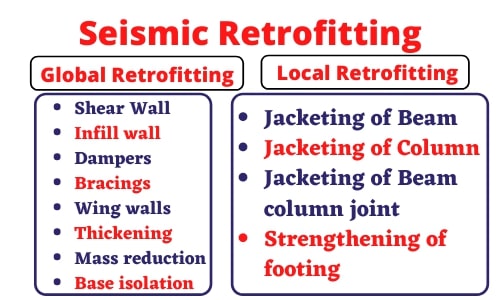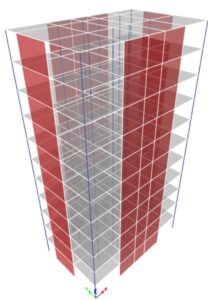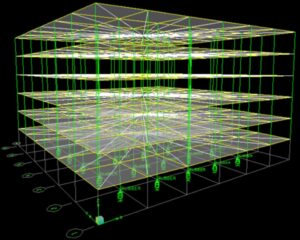Contents
What is seismic retrofitting? What are different types of seismic retrofitting techniques?
Definition of seismic retrofitting
Seismic retrofitting techniques is the process or method used to decrease the seismic loading condition for building or other civil engineering structural elements. For example let us take G+6 structural building with 21m height which is located in high danger seismic zone condition, due to the effect of more lateral loading condition system (earth quake load) in high seismic zone the defection and bending values will increases. To reduce that intensity of damage rate the structural engineers are introduced various retrofitting methods, by using these methods we can easily reduce the seismic loading action on the structure.
As per the structural engineering considerations the retrofitting of building is applicable only in high and sever condition seismic zone, because the failure rate of the building structure in high or sever case is more when we compare with normal seismic zones. The method of metrification is depends upon the two major factors one is failure and other is total sum of the gravity and lateral loads. This retrofitting process will helps to increase the lateral resistance of the building structure under the considerations.
In order to make the retrofitting of building structure firstly we need to investigate the weak joints or week members. With the help of weak points determination it is easy to strengthening of the members like beams, columns, slabs and foundation etc. The three dimensional analysis softwares like Staad Pro, ETABS, SAP or TEKLA mainly used to investigate the weak joints in building structure under the action of seismic load.
Seismic retrofitting techniques
The seismic retrofitting techniques are mainly classified in two categories
- Global retrofitting Techniques
- Local retrofitting Techniques
The detailed flow chart for global and local retrofitting classification is shown in the below.

Under the global retrofitting the techniques like shear wall, bracing, dampers, infill walls, wing walls, thickening, reduction and isolations are made. For the local retrofitting the methods like jacketing of beam, jacketing of columns, jacketing of beam and column joint and strengthening of footing is made.
Global seismic retrofitting techniques
Shear wall seismic retrofitting technique
The shear wall the first retrofitting technique comes under global category these are the vertical elements generally made with concrete material. The lateral loads like seismic and wind loads acts perpendicular to the shear wall face. This technique is the most effective process now a day’s using in building construction to reduce the damage rate of structure under lateral loading effect.

Bracings seismic retrofitting technique
The bracing system in the second technique comes under the global category. These are the steel members which are fixed to the column or beams in order to decrease the oscillations of building structures under the lateral loading effect. Depending upon the usage there are different types of bracing systems are there namely, forward bracings, back ward bracings, X type bracings, V types bracings, K type bracings etc.

Infill wall system
The infill wall is the third technology comes under global category it is similar to the shear wall condition but it will closes the one side of perimeter of building structure. There are various types of infill walls are there namely light steel framed infill wall, light steel separating wall, concrete infill wall, timber framed infill wall, etc. Depending upon the weak member consideration infill wall is selected in building design. The lateral load acts perpendicular to the infill wall in this case also.
Dampers
Dampers is forth technology comes under global category these are the steel members which is having similar properties of bracing system condition. The dampers are help to decrease the seismic loading condition and the building moves elastically under the action of seismic loading. Dampers like viscous, viscoelastic, friction, tuned mass, yielding and magnetic types are used in building design.
Wing wall system
Wing wall is the fifth technology comes under global category this is the small structural wall member basically it is attached to the next larger wall in the buildings or any other structural elements. The seismic oscillations are developed initially in the wind wall below the main system and it will reduce the lateral loading action effect in the main structure.
Thickening system
Thickening is the sixth technology comes under global category this method is used to increase the dimensions of the existing members. In this the structural elements thickness is increased for example if the wall is having 230mm for old building by using thickening we can increase that to 300mm.By increase in the thickness the lateral loading effect will be reduces in structure. This method is also important in strengthening of building now a days using.
Mass reduction system
The mass reduction is the seventh method used in retrofitting of building in this method reduction of storey is made in order to reduce the loading condition. For example if the building is G+5 with higher amount of loading condition system we need to make that to G+4 or G+3 to level the strength of the building.
Base isolation
The base isolation system is the last technology comes under global retrofitting; this method reduces the oscillation effect. Under this base isolation systems the methods like rubber base isolation and friction pendulum isolation stems are taken in the earth quake resistant constructions. The isolations are placed at the support condition system only and whatever the oscillations and defection which are applied only to the structure below the support condition.

Local seismic retrofitting techniques
Jacketing of beam system
Jacketing of the beam come under the first method in local retrofitting. The extra reinforcement bars are provided for the existing beam member to increase the strength, by providing extra reinforcement the lateral loading condition of the structure decreases and this is the advanced method in strengthening of building.
Jacketing of column system
Column jacketing is also similar to the beam jacketing in this the vertical member like column section reinforcement increases. The jacketing of column consisting of the adding the longitudinal reinforcement bars as extra reinforcement in building. This method frequently used now a days for strengthening the old building under certain condition and limitations only.
Jacketing of beam and column joint system
The jacketing of beam column joint come under local retrofitting technology in this the weak joints are determined initially for existing system by applying lateral loads in three dimensional analysis software like STAAD, ETABS or SAP. After determining the weak joints the retrofitting is made for increasing the strength of that respected joint.
Strengthening of footing system
This is the last method in local retrofitting this is used for old buildings by increasing the size of the footing and reinforcement bars in existing building. The jacketing of bars is properly made to the existing footings and anchored to the column section in order to transfer the loading. But this method is not advisable in building construction.
The complete concepts of retrofitting of building are explained in my YouTube Channel Please click here to see.
Video
Conclusions for seismic retrofitting techniques
Well now the above explained concepts are related to the retrofitting of building and different types of techniques. Please follow my YouTube channel for more information regarding civil engineering concepts.
If you have any quarries regarding this article please feel free to reach us at contact us page.
Thank You
Your Shravan
Have a good day.